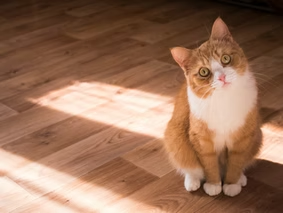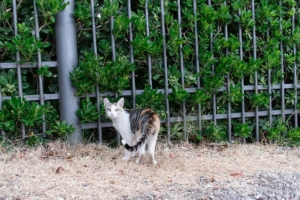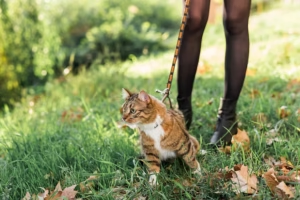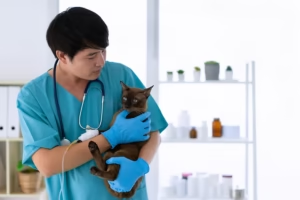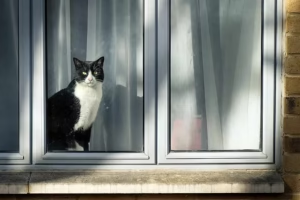Some cats love to nap all day in their favorite window spot, while others seem to follow you from room to room. All cats are different, but just like people, they need some kind of social connection to stay happy. Even if they’re known for their independence, cats still need bonding time with their human family or other friendly animals. When they don’t get that, it can start to show in their behavior and mood.
Have you noticed your cat meowing more than usual? Or maybe they’ve stopped greeting you like they used to? These may be signs that your cat is feeling a bit lonely or under-stimulated. Social interaction plays a bigger role in a cat’s day-to-day comfort than most folks realize. If you’re wondering whether your cat could use more attention or companionship, the answers might be closer than you think.
Why Social Interaction Matters For Cats

Cats might not always ask for attention the way dogs do, but that doesn’t mean they don’t crave it. Social time supports your cat’s emotional and physical health. Without enough interaction, things can start to shift in ways that affect how they eat, play, sleep, and handle routine stress.
Just like people, cats can get bored or lonely when they don’t have anyone to connect with. A bored cat may overeat, become more vocal, or start scratching furniture to get your attention. Others may withdraw and seem less interested in things they used to enjoy. Making time for regular social experiences gives cats more structure and purpose in their daily life, especially if they’re indoor-only.
Social interaction helps to:
– Strengthen the bond between you and your cat through play or calm time together
– Boost mental activity to prevent boredom, especially during long, quiet afternoons
– Reduce the chances of stress-related behaviors like spraying or nighttime zoomies
– Encourage movement and gentle exercise during playtime
Cats that socialize on a regular basis tend to be more confident, curious, and even easier to care for when new changes pop up. One cat owner shared how letting their shy cat spend time with a relaxed older cat at a supervised cat lounge helped her open up over time. The presence of other calm animals had a big impact on how she explored and interacted with her surroundings.
The goal isn’t to turn your cat into a social butterfly. Instead, it’s about helping them find balance. Giving them the right amount of positive connection means they’re less likely to act out and more likely to be content.
Signs Your Cat Needs More Social Interaction
Cats aren’t going to leave a note asking you to play. But they do have plenty of subtle (and not-so-subtle) ways of letting you know they’re feeling a little left out. Once you start paying closer attention, the signs are usually easy to spot.
A few signs your cat might need more social time include:
1. Becoming more vocal than usual, especially when you’re in another room
2. Knocking things over or darting around the house out of nowhere
3. Hiding for long periods or not coming out when called
4. Refusing to play with their usual toys or not reacting to things that used to excite them
5. Staring at the window or door for hours, maybe waiting for someone or something to show up
Some of these behaviors can be mistaken for mood or age changes, but they may actually be a cry for interaction. The tricky part is that not all cats show these signs the same way. One cat might turn clingy and follow you around, while another might avoid everyone completely.
Paying close attention to moments when your cat seems out of character can help you catch these signals early. It’s not about changing their personality, but letting them know they’re still part of a connected home life. And when they get that reassurance through safe and regular connection, both you and your cat often feel more settled.

Ideas For Providing More Social Interaction
If you think your cat needs more social connection, there are simple ways to bring that into their day. You don’t need to turn your house into a kitty playground overnight, but small efforts go a long way.
Start with playtime. Interactive toys can help your cat use their brain and body while giving you a chance to connect. Try toys that mimic the movement of birds or mice, like feather wands or motorized mice on the floor. Rotate them every few days to keep things exciting.
Another fun idea is visiting or booking time at a cat lounge. These spaces are designed to safely allow cats to mingle with other friendly and well-cared-for felines. If your cat is shy or unsure around new cats, a slow introduction with staff guidance could help.
No matter how busy the day gets, your cat notices when you carve out even 10 to 15 minutes for just them. Daily routines that include gentle petting, brushing, or sharing quiet time on the couch can also make a big difference. Regular interaction, done on your cat’s terms, builds trust and keeps that bond strong.
Here are a few ways to provide more social interaction for your cat:
– Set up short, scheduled play sessions at the same time each day
– Use interactive toys like feather wands, track balls, or toys that chirp, pop, or move on their own
– Consider a visit to a cat lounge for supervised interaction with other cats
– Add a perch near a window to give them a view of birds, squirrels, or people walking by
– Make room for cuddle time during your regular routine, like after dinner or before bed
If you have multiple pets, find neutral ground for them to engage so nobody feels defensive. Stay nearby to help guide the interaction and put a pause on things if either pet looks uneasy. Positive moments can help build confidence over time.
When It’s Time To Call In A Professional
Sometimes you’ve tried everything and your cat still seems off. Maybe the signs of stress haven’t gone away, or maybe they’ve gotten worse. That’s when it makes sense to reach out for help. A sudden shift in behavior could signal an underlying medical or behavioral issue that needs attention.
A vet visit is a smart first move, just to rule out anything causing your cat physical discomfort. Once your cat is cleared from a health angle, an animal behaviorist can assist with figuring out what’s causing the emotional or behavioral concern. They often look at things like your cat’s daily routine, environment, and history to make suggestions you might not have thought of.
Professionals may recommend gradual exposure techniques, different play styles based on breed or age, or sometimes specialized care environments. A local cat lounge in Austin, for example, often has systems in place where cats can interact under supervision. These controlled sessions can help solve social struggles without the stress that sometimes comes with home environments.
Don’t wait until the problem becomes overwhelming. If your cat’s social habits have changed and nothing seems to help, getting guidance from a trained professional can give everyone more peace of mind.
A Happier Cat Starts With Connection

Social interaction might seem like a fluffy extra to some, but for cats, it’s part of what helps them feel grounded. Finding the right mix of engagement helps create a calmer, happier home where your cat feels seen, safe, and connected.
Like people, cats each have their own comfort level. That’s why patience is so important. Pushing too quickly can make things harder. Instead, let your cat take the lead. Offer quiet encouragement, repeat routines they enjoy, and stay open to trying different things. Over time, you’ll probably notice your cat becoming a little more playful, a bit more relaxed, and more open to company.
Creating those stronger connections takes time, but the effort always pays off. A cat that feels connected is easier to care for, has fewer behavior issues, and shares more moments of pure joy with their humans. And for anyone who’s ever felt the warmth of a cat curling up next to them after a long day, those little moments mean everything.
Ready to give your cat the social experiences they’re craving? Let Sydney’s Sanctuary support your journey by exploring a cat lounge where your feline can safely interact with others in a calm, supervised setting. Our goal is to help your cat feel more confident and connected in a way that suits their unique personality.
